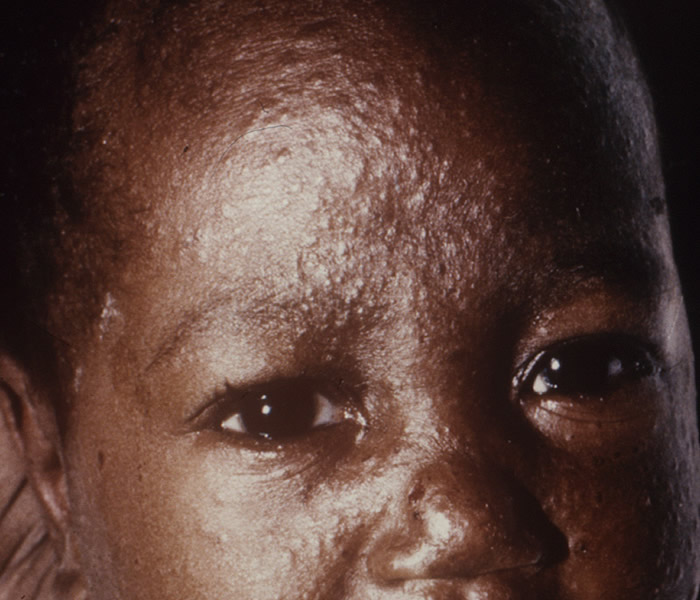Basic Epidemiology of Measles in Sub-Saharan Africa
DLHA Staff Writer

African child with typical measles rash on the face.
Measles is a highly contagious, acute viral illness and is a leading cause of death among young children globally and more so in Sub-Saharan Africa (SSA).
It affects people across all age groups.
The incubation period typically ranges from 10 to 14 days
According to the WHO, the incidence of measles in the Sub-Saharan Africa has been steadily increasing, with a reported increase from 69.2 per 1 million population in 2017 to 81.9 in 2021.
The disease affects male and female African children in almost equal proportion and remains a leading cause of death in children, with an estimated 28,000 measles-related deaths occurring annually in SSA.
Recurrent and deadly measles outbreaks occur in many SSA countries for many reasons including, weak health system, on-going regional or intra-national conflicts and/or natural disasters.
Transmission occurs via airborne droplets or direct contact with respiratory secretions from infected individuals.
Individuals are considered infectious from approximately four days before and until four days after the rash appears.
Early symptoms of measles include:
Vaccination remains the cornerstone of measles prevention. It not only prevents measles but also significantly reduces the risk of its potentially life-threatening complications.
The measles-containing vaccine is among the most effective vaccines available, with a two-dose schedule providing approximately 97% lifelong protection.
Although vaccination coverage has improved, many countries in Sub-Saharan Africa still struggle to achieve the recommended coverage of 95% for measles-containing vaccines.
While there is no specific antiviral therapy for measles, the majority of patients recover within 2–3 weeks with supportive care.
Measles can result in severe complications, including:
Source: World Health Organization
Related: What is measles?
Published: May 16, 2025
© 2025. Datelinehealth Africa Inc. All rights reserved.
Permission is given to copy, use and share content for non-commercial purposes without alteration or modification and subject to source attribution.
DATELINEHEALTH AFRICA INC., is a digital publisher for informational and educational purposes and does not offer personal medical care and advice. If you have a medical problem needing routine or emergency attention, call your doctor or local emergency services immediately, or visit the nearest emergency room or the nearest hospital. You should consult your professional healthcare provider before starting any nutrition, diet, exercise, fitness, medical or wellness program mentioned or referenced in the DatelinehealthAfrica website. Click here for more disclaimer notice.